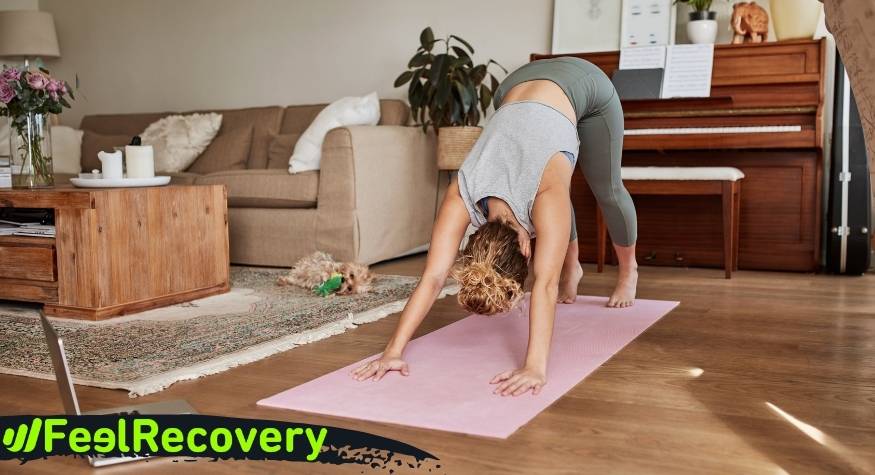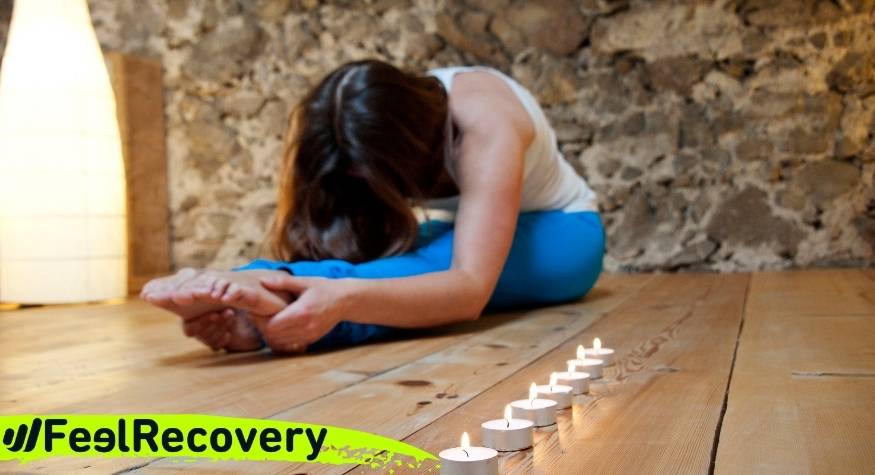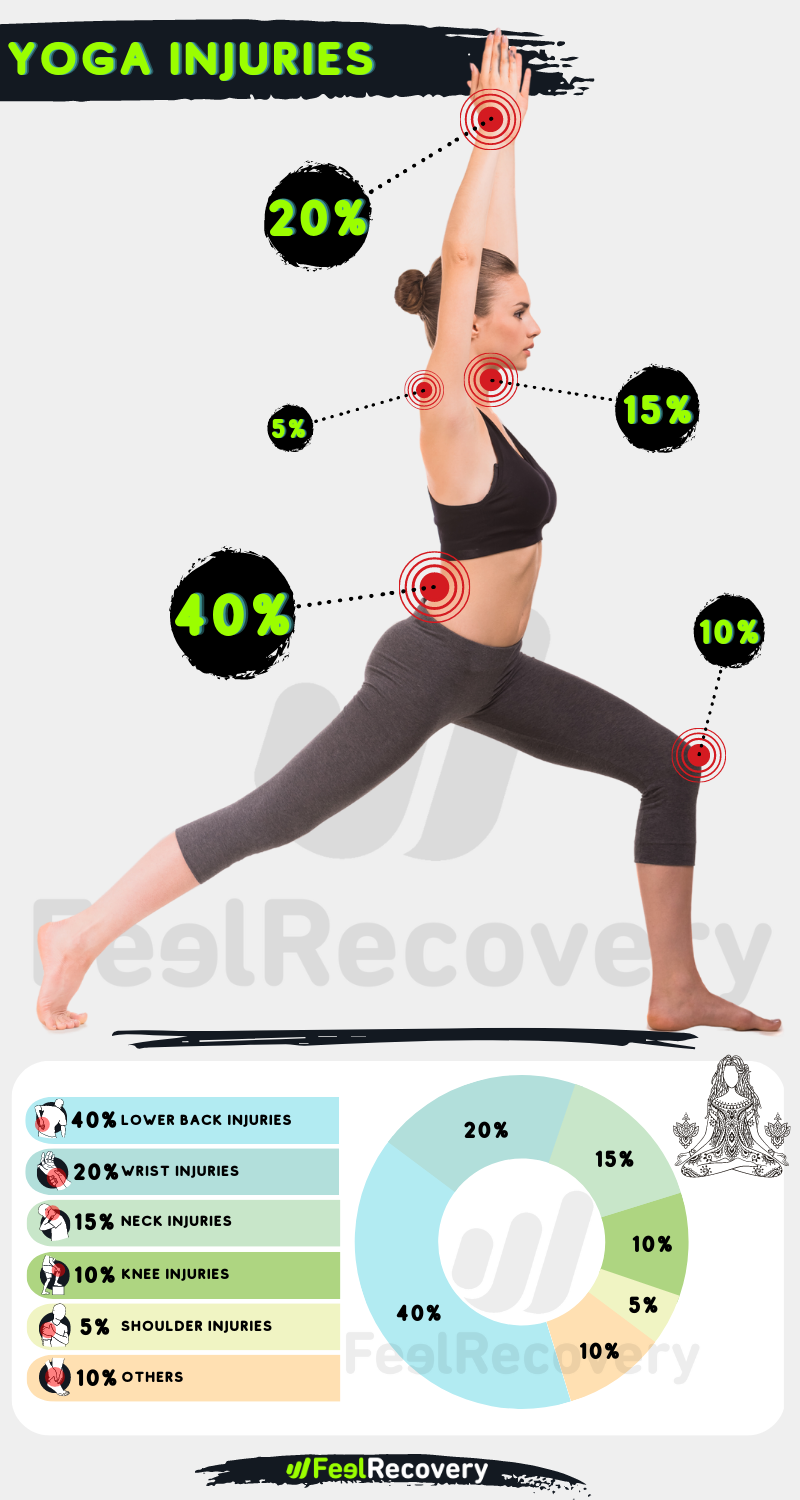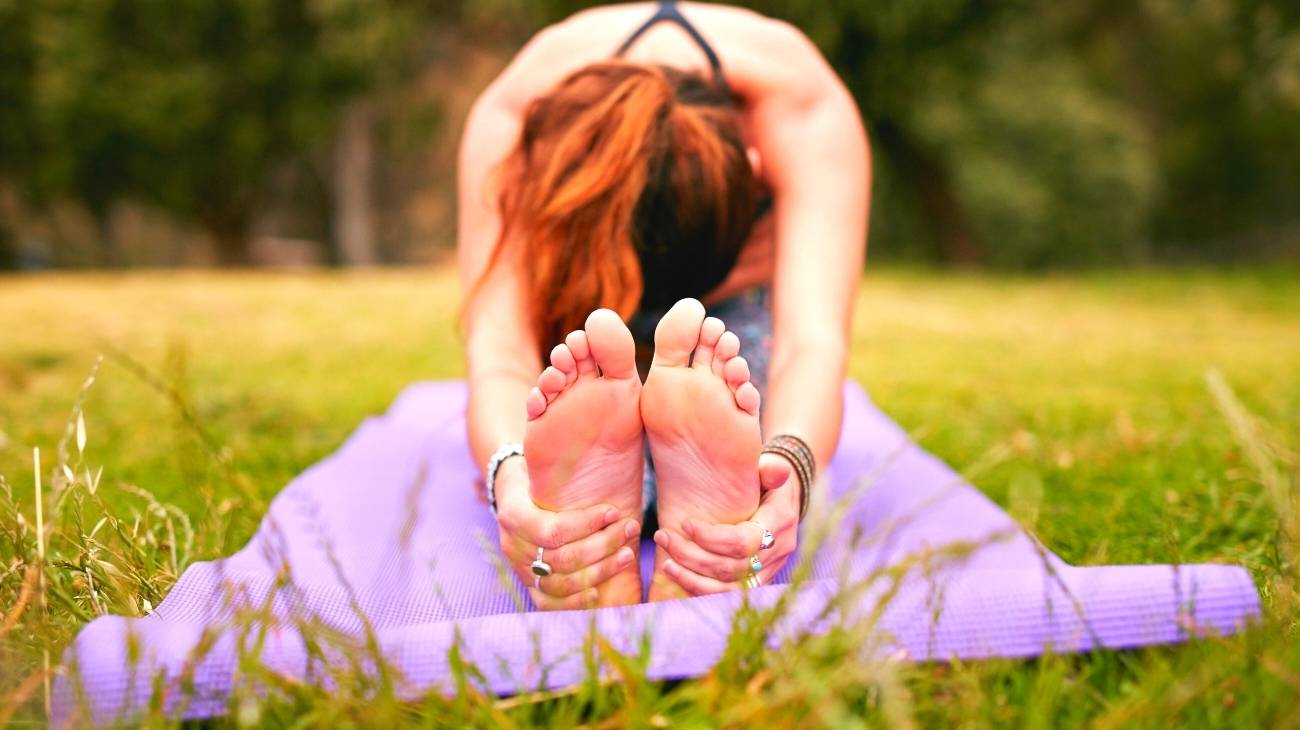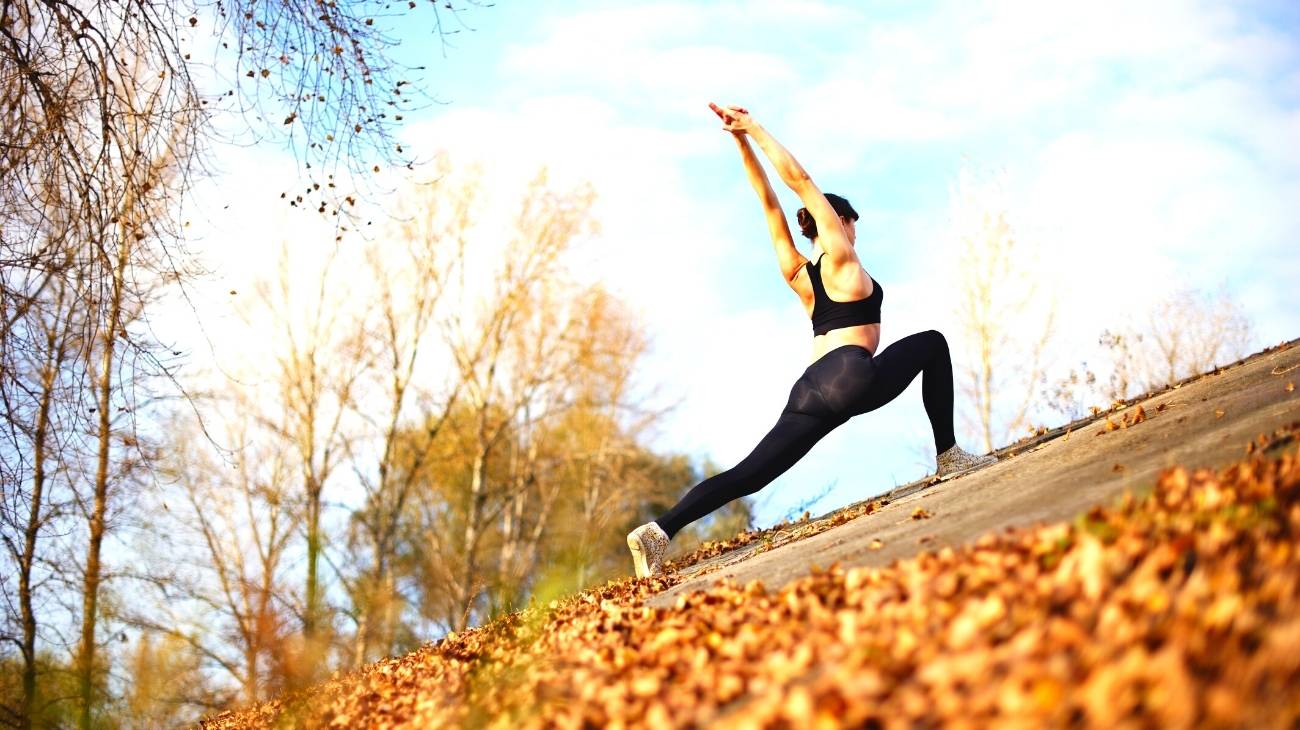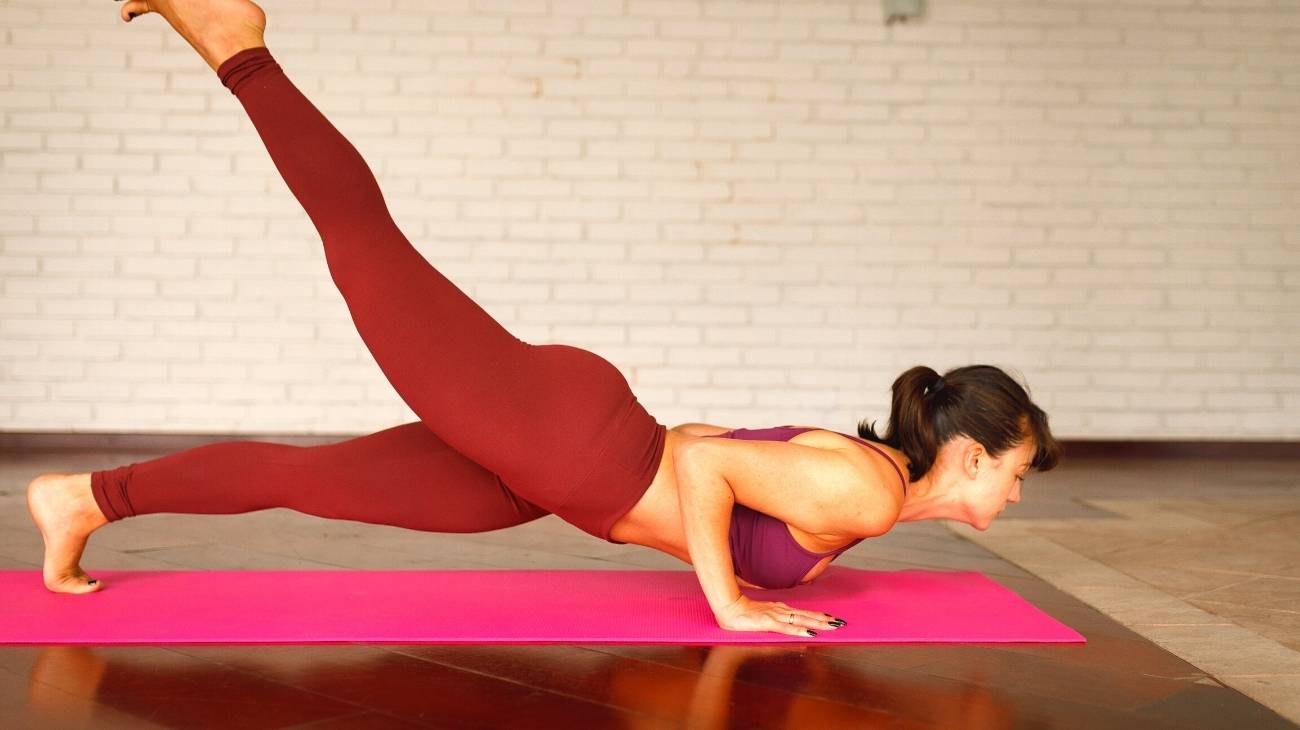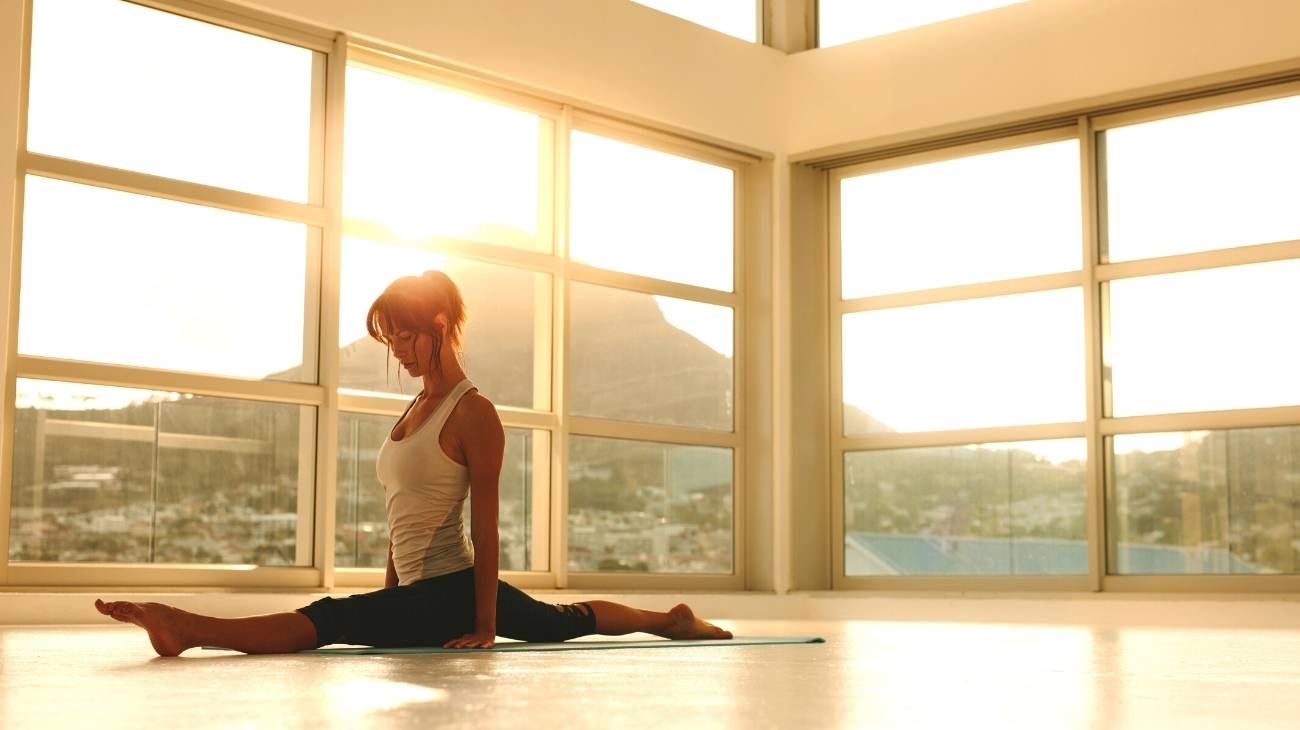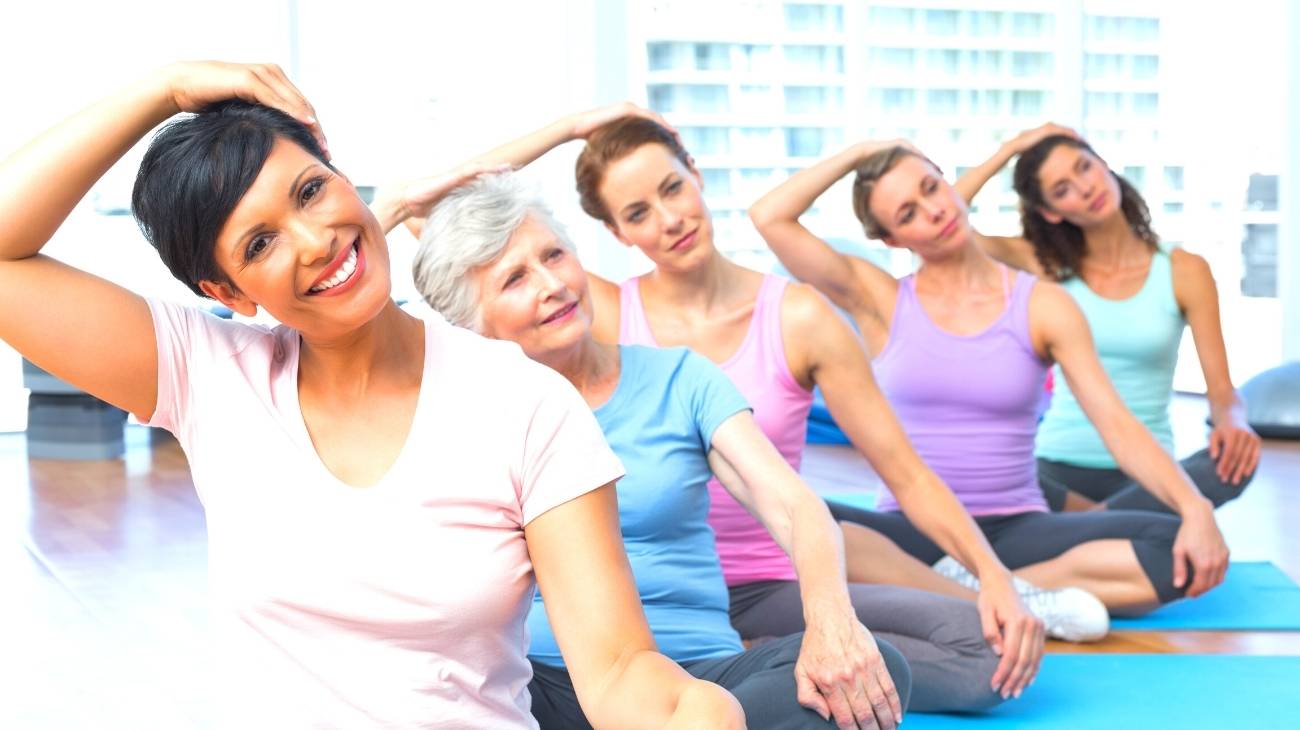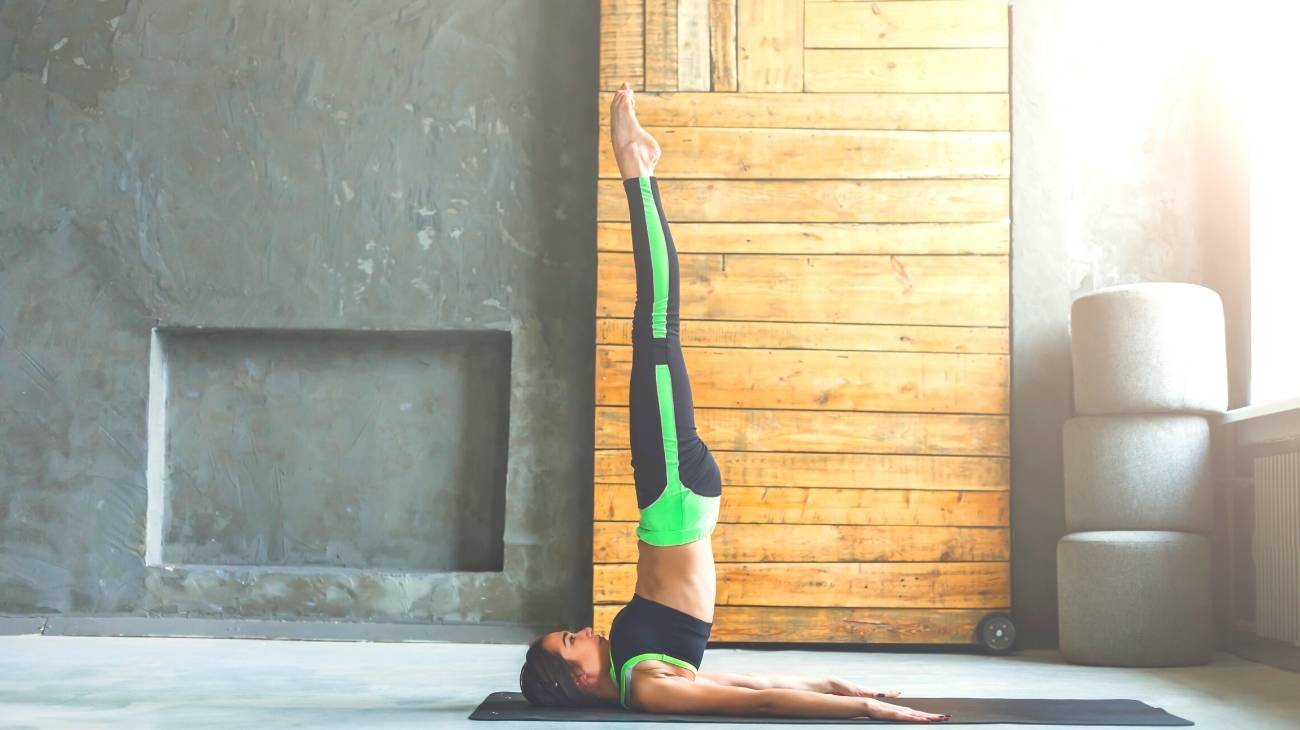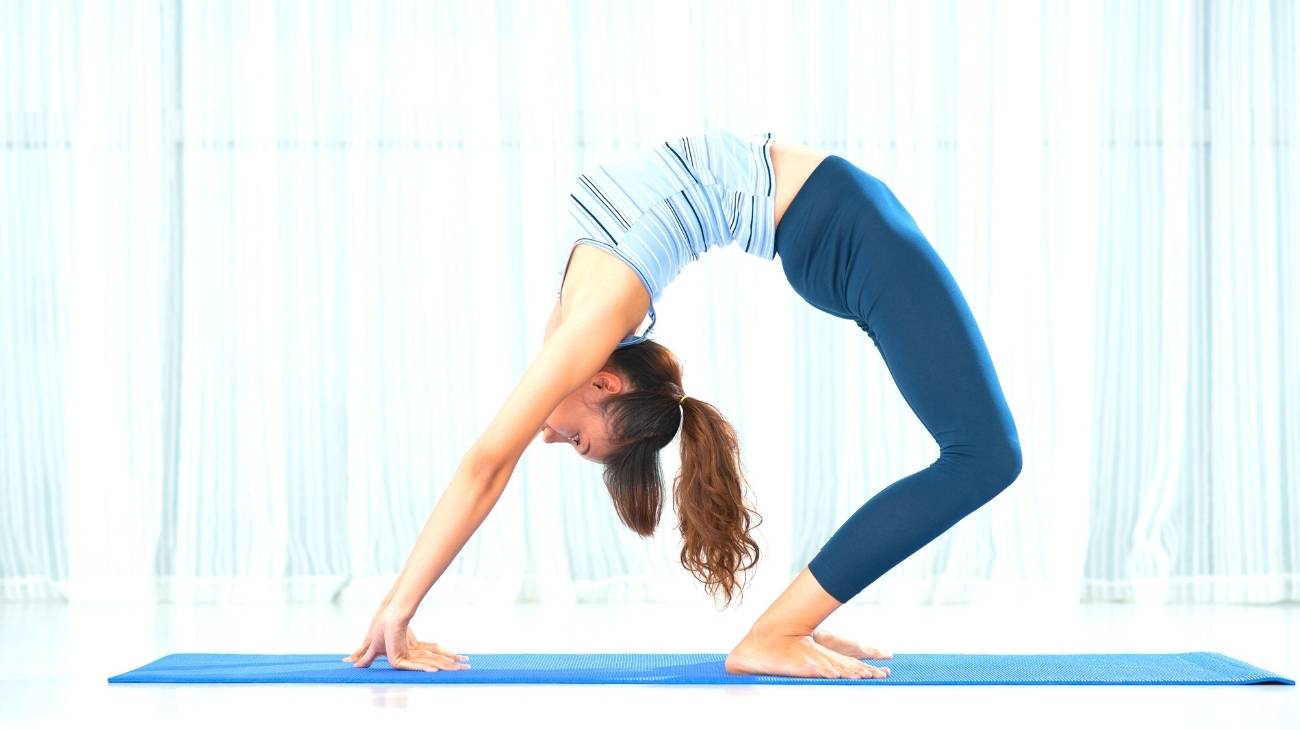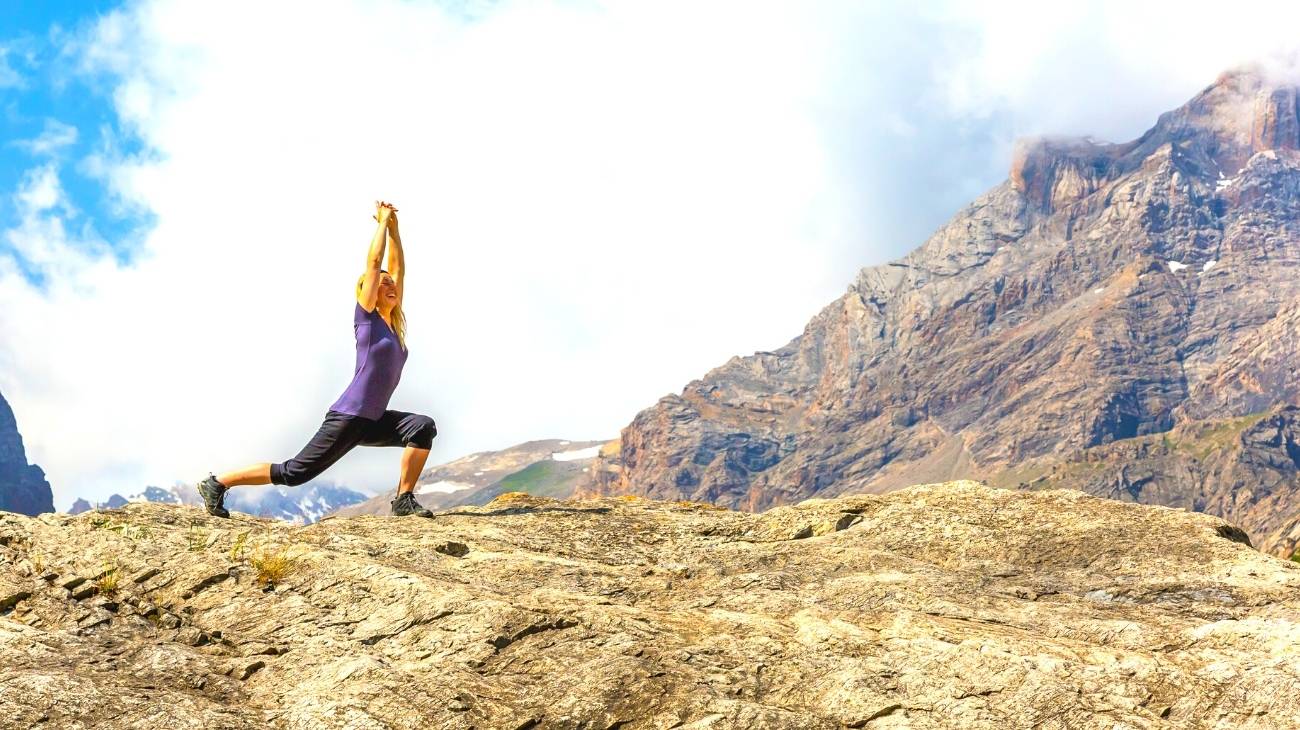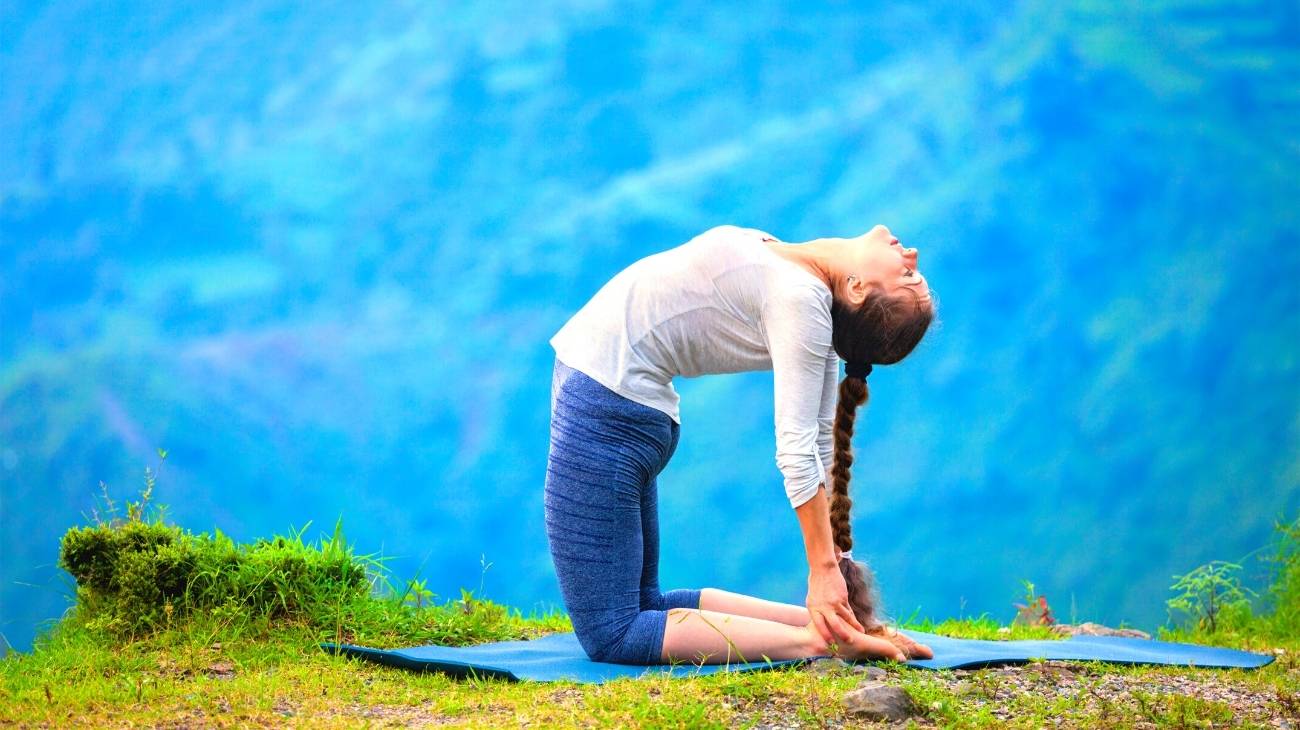Yoga is a discipline that offers many health benefits. Most of its exercises promote physical fitness, lower blood pressure, improve stress, strength and flexibility. As a low-intensity activity it is less risky than other sports, but unfortunately it can cause injuries.
Most of them are caused by performing positions with improper technique. It is therefore important for yogis to be aware of the main injuries they are prone to. Below, you will learn more about yoga injuries and how to prevent and treat them.
What are the most common types of injuries when doing Yoga?
Yoga is a sporting practice that, despite its great benefits, has great risks of injury, although at first it may not seem so. There are beginners who have made the mistake of practising it without a level of preparation or an instructor who can correct the postures.
The main mistake is to be too demanding with the body and to perform positions with the pressure to match the master. These positions place some parts of the body in hyperextension or hyperflexion generating the most common yoga injuries:
Neck injuries
These are the result of muscle contractures or compression of the vertebral discs and nerves. They are generated by the "inverted asanas" positions, where the head is placed at rest on the floor and excessive pressure is exerted on the cervical vertebrae.
While it is true that they can cause acute injuries such as contractures and tears in beginners due to bad techniques. Also in experts they cause overload injuries causing long-term damage to the cervical vertebrae, discs and nerves. Neck injuries cause moderate to severe pain, inability to perform extension, flexion and lateral movements.
Rotator cuff tendinitis
The shoulder joint is very susceptible to injury in yoga, especially when proper muscle preparation is lacking. Postures or asanas called cow's head, backbends, planks or chaturangas can cause the head of the humerus to pop out. This can also lead to inflammation of the rotator cuff tendons and ligament tears. Repetitive overhead movements can also add to the inflammation. Pain is the main symptom, accompanied by inability to raise the arms above the head and swelling.
Shoulder dislocation
Shoulder dislocations are often caused by a lack of coordination of the muscles that hold the shoulder joint together. This often occurs in beginners when overextending or overstretching. It is then easy for the head of the humerus to separate from the glenoid cavity and the bone to slip out of the joint.
They can also occur from falling onto the shoulder in a loss of balance while in a standing position. What is felt immediately after the dislocation is severe pain, inability to move and swelling.
Biceps tendon rupture
The long portion of the biceps is responsible for flexion, extension, supination of the elbow and providing stability to the shoulder. A tear is one of the most serious upper limb injuries that can occur in the practice of yoga.
It is a consequence of rotator cuff injuries, when performing asanas with poor technique. Any inflammation at the level of the rotator cuff overloads the biceps brachii tendon, causing it to become inflamed. This causes pain in the anterior part of the shoulder, which increases when the arm is raised above the head.
Lateral epicondylitis
Although it is called tennis elbow, it can also be generated in the practice of yoga. It is produced by a bad position of the elbows when keeping them bent or with a lot of tension. It is very common when performing positions such as chaturanga.
The main problem with these positions is that they are often performed without the necessary care or proper technique. The most common symptoms are pain on movement and at rest, muscle weakness and decreased range of motion.
Elbow bursitis
Bursitis is the result of yoga positions that put pressure on the bursa or repetitive movements. The bursa of the elbow joint suffers from overloading due to prolonged bending or extension. This causes inflammation, pain on movement, joint stiffness, swelling and localised redness.
Wrist tendonitis
Tendinitis in the wrist is caused by overloading the wrist when performing positions with the hands as a support and by falling on them. In yoga there is a tendency to use the wrists as support, and on many occasions the whole weight of the body is placed on them. This causes compression of the joints and hyperextension of the ligaments in the joints.
As a result, the wrist ligaments become inflamed and micro-tears occur at the wrist ligaments. This causes severe pain in the wrists, especially during flexion and extension movements. It is also accompanied by redness, swelling and difficulty in moving the wrist.
Carpal tunnel syndrome
This is another of the conditions caused by overloading in yoga by performing positions where the hand has to support the weight of the body. This injury is located precisely at the base of the wrist, in the region of the carpal tunnel. This generates excessive pressure on the median nerve, which is responsible for providing strength and sensitivity to the hand. Pinching or compression of the nerve causes pain, numbness, tingling and weakness, especially when trying to hold objects in the hand.
Patellar tendinopathy
Patellar tendinopathy is an inflammation of the patellar tendon, the tendon that attaches the patella to the tibia. The main cause of patellar tendinopathy in the practice of yoga is the padmasana or lotus position or putting the knees in hyperextension. This can also lead to micro-tears in the tendon causing inflammation and further damage to the tendon.
It usually causes pain that can worsen with the performance of the postures described above. Over time, the pain can worsen and affect movements such as climbing stairs or getting up from a chair. It may also cause redness and swelling.
Torn or ruptured meniscus
The meniscus is also impacted by hero's pose (virasana) or hyperextension of the knees. These positions overload the meniscus due to twisting or compression, causing tears or tears in the inner meniscus. This can lead to severe pain, swelling, difficulty flexing the knee and a lot of stiffness. It can also cause clicking or instability at the knee.
Hamstring contracture
Hamstring muscles are easily injured in yoga. They are often caused by sudden, unsupported bending. Sitting for long hours causes a shortening of the posterior chain of the body causing it to contract or tear.
They cause a sudden and quite intense pain in the back of the thigh accompanied by a lot of swelling and bruising. In addition, there is marked muscle weakness and inability to support the injured leg.
Hip labral tears
Comprises the tear at the level of the ring of cartilage called the labrum located at the edge of the hip joint. It is responsible for cushioning the joint and helps support the femoral head. In yoga, due to the nature of the movements, compression of muscles, tendons, and the labrum cartilage ring is generated. Most of the movements in this discipline place each of the muscle groups under extreme tension. And in the case of the hip, the tendons that make up this joint are often stretched to the point of tearing.
They are also often caused by bone spurs, where bone particles are dislodged causing further compression. Subsequently, with the passage of time, tears and impingement occur due to the loss of smoothness of movement. The most common symptoms are hip pain radiating to the groin and buttocks, stiffness and clicking.
Osteoarthritis of the hip
Osteoarthritis of the hip is a chronic degenerative pathology in which the articular cartilage suffers deterioration and wear. It is caused by excessive overload causing wear and tear or by continuous microtrauma over a long period of time. It usually becomes chronic when clinical manifestations occur but the person does not see a specialist.
The most common form of presentation is mild localised pain at the hip, which worsens over time. On other occasions, the pain is sudden, accompanied by snapping, especially when performing flexion or squatting movements.
Hip dysplasia
Hip dysplasia is a chronic condition resulting from yoga postures. This causes structural changes in the hip joint, creating a gap between the two bones. The head of the femur moves a little externally and creates a deeper cavity at the acetabulum level.
Hyperflexion or hyperextension postures generate a greater range of motion over the years, but with greater instability. In general, this level of flexibility is very useful in the practice of yoga. However, overuse can be detrimental to the health of the hips.
Tendonitis in the ankles
Although ankle injuries are not common, they can occur when there is a lack of proper yoga technique. Lotus posture, virasana and supta virasana can cause excessive tension and inflammation of the tendons and ligaments.
When the tension exceeds the capacity of the tendons, micro-tears or tears can occur. Symptoms include pain, swelling, redness and limitation of joint movement.
Lumbar injuries
Injuries to the lumbar spine are the most frequent in the practice of yoga. The main cause is postures where the spine is subjected to excessive bending and twisting. This can lead to compression of the vertebral discs, which can also rupture and cause injury to the spinal nerves.
The most damaging postures for the lumbar spine are the camel and cobra postures. The pain that is generated is very accentuated and can radiate to the legs and buttocks. When the compression affects the sciatic nerve, it can cause numbness, difficulty in moving the leg and loss of sensation.
Bone fractures
Bone fractures in yoga are usually caused by impacts of the body on joints or bones during falls. In yoga, positions are performed that require balance and stability, which beginners have not developed.
When the yogi falls, he or she breaks small bones in joints such as the wrist and ankle due to the weight of the body. This automatically generates pain of strong intensity, accompanied by functional limitation, increased volume and popping.
Best products for Yoga injury recovery
Bestseller
-
2 Ankle Compression Sleeve (Black/Gray)
$19.95 -
2 Ankle Compression Sleeve (Green/Navy)
$19.95 -
2 Ankle Compression Sleeve (Pink/Bordeaux)
$19.95 -
2 Elbow Compression Sleeve (Black/Gray)
$19.95 -
2 Elbow Compression Sleeve (Green/Navy)
$19.95 -
2 Elbow Compression Sleeve (Pink/Bordeaux)
$19.95 -
2 Knee Compression Sleeve (Black/Gray)
$19.95 -
2 Knee Compression Sleeve (Green/Navy)
$19.95 -
2 Knee Compression Sleeve (Pink/Bordeaux)
$19.95 -
Acupressure Mat and Pillow (Black/Gray)
$49.95 -
Acupressure Mat and Pillow (Green/Navy)
$49.95 -
Acupressure Mat and Pillow (Pink/Bordeaux)
$49.95 -
Acupressure Pillow (Black/Gray)
$29.46 -
Acupressure Pillow (Green/Navy)
$29.46 -
Acupressure Pillow (Pink/Bordeaux)
$29.46 -
Foot Massage Roller for Plantar Fasciitis (Black)
$19.95 -
Foot Massage Roller for Plantar Fasciitis (Green)
$19.95 -
Foot Massage Roller for Plantar Fasciitis (Pink)
$19.95 -
Gel Eye Mask for Puffy Eyes (Gold/Black)
$11.95 -
Gel Eye Mask for Puffy Eyes (Orange/Pink)
$11.95 -
Gel Eye Mask for Puffy Eyes (Purple/Turquoise)
$11.95 -
High Density Foam Roller for Muscle (Black/Gray)
$29.95 -
High Density Foam Roller for Muscle (Green/Navy)
$29.95 -
High Density Foam Roller for Muscle (Pink/Bordeaux)
$29.95 -
Ice Massage Roller Ball (Black)
$39.95 -
Ice Massage Roller Ball (Green)
$39.95 -
Ice Massage Roller Ball (Pink)
$39.95 -
Microwave Heating Pad for Neck & Shoulder Pain Relief (Hearts)
$24.95 -
Microwave Heating Pad for Neck & Shoulder Pain Relief (Oxford)
$24.95 -
Microwave Heating Pad for Neck & Shoulder Pain Relief (Sport)
$24.95 -
Microwave Heating Pad for Neck Pain Relief (Hearts)
$19.95 -
Microwave Heating Pad for Neck Pain Relief (Oxford)
$19.95 -
Microwave Heating Pad for Neck Pain Relief (Sport)
$19.95 -
Pack 2 In 1 Foam Roller High + Soft Density (Black/Gray)
$29.95 -
Pack 2 In 1 Foam Roller High + Soft Density (Green/Navy)
$29.95 -
Pack 2 In 1 Foam Roller High + Soft Density (Pink/Bordeaux)
$29.95 -
Sacroiliac Support Belt (Black)
$24.95 -
Sacroiliac Support Belt (Green)
$24.95 -
Sacroiliac Support Belt (Pink)
$24.95 -
Shoulder Support Brace (Black)
$24.95 -
Shoulder Support Brace (Green)
$24.95 -
Shoulder Support Brace (Pink)
$24.95 -
Soft Density Foam Roller for Recovery (Black)
$29.95 -
Soft Density Foam Roller for Recovery (Green)
$29.95 -
Soft Density Foam Roller for Recovery (Pink)
$29.95 -
Trigger Point Massage Stick (Black)
$14.95 -
Trigger Point Massage Stick (Green)
$14.95 -
Trigger Point Massage Stick (Pink)
$14.95 -
Wrist Brace (Black/Gray)
$19.95 -
Wrist Brace (Green/Navy)
$19.95 -
Wrist Brace (Pink/Bordeaux)
$19.95
How to prevent injuries when practising Yoga?
As we have already mentioned, yoga is a discipline that has excellent health benefits. It is used as a complement in treatments for cancer, diabetes and cardiovascular diseases, as well as to reduce stress and other pains. Despite its great benefits, there are many risks of injury in its practice.
Some of the most recommended measures are as follows:
Warm-up
Before starting any activity related to the practice of yoga, it is necessary to warm up the body. In this way, the muscles and joints are prepared for the training. The main purpose is to loosen up the joints and muscles in order to avoid overload injuries, strains or sudden contractions.
The correct way to warm up in yoga is from the bottom up, starting with the feet:
- Warming up the ankles and feet: the correct way is to sit on the floor, keep your back straight and then bend your knees at chest level. Then, keeping the same position, raise your left foot slightly and rotate it in circles for 15 seconds. Then repeat with the right foot.
- Calf warm-up: This warm-up prevents numbness at the back of the leg. Stand facing the front, legs slightly apart on a mat, slowly raise your legs until you are on tiptoe. Then hold the elevation for 15 seconds, slowly lowering down. And before reaching the floor, raise your legs again for 3 repetitions.
- Leg warm-up: These exercises serve to activate the legs in general during the practice of yoga. On the same mat with your legs open and your back completely straight, you start to lower your hips like squats. Stay in this position for 10 seconds and slowly raise your body for 2 cycles.
- Arm and back warm-up: It is important to do these exercises before performing the asanas. In a front facing position and with the legs open, the arms are left at rest next to the body. Then raise them at the same time up to eye level, joining hands and stretching them until you feel your back relaxed. Then spread the arms apart, open them to the sides and pull them towards the back for 10 seconds.
Cool down
After performing the yoga routines it is necessary to take some time to cool down the body to avoid overload injuries. Postures can be performed to help the venous return of blood to the heart such as inverted and forward bending postures. Among the easiest to perform are:
- Viparita karani: This is a restorative posture suitable for beginners. It offers relaxation to the legs, back, abdomen and encourages gentle, deep breathing to improve tissue oxygenation.
- Sarvangasana: This position helps with venous return, helping to decongest the muscles and other organs.
- Janu sirsasana: This is specially designed to improve the functions of the muscles and other organs of the human body. It calms the nervous system and improves mental functions.
- Uttanasana: This posture improves mental functions, especially concentration and thinking. It works as a sedative for the central nervous system. It also relaxes all the muscles of the body.
- Paschimottanasana: This posture stimulates the solar plexus and decongests all systems and organs.
In addition to improving physical conditions, these postures also promote breathing and meditation. This process is extremely important after any yoga routine as it helps to calm the muscular and nervous system. As a final step, the Savasana position can also be added to complete the process of cooling and relaxing the body.
Equipment
Although yoga is a discipline that generally does not require accessories or specialised equipment, just your predisposition is enough. However, in order to practice yoga in the best possible conditions it is necessary to have the right and very simple equipment:
- Comfortable clothes: The most important thing when practising any yoga routine is to feel totally comfortable. It is important to select clothes that fit snugly to the body as they allow the correct performance of the postures to be visualised. Loose-fitting trousers can also be used as they ensure better freedom of movement. Another option is leggings, which allow for greater flexibility.
- Yoga mat: This is one of the necessary implements for the practice of yoga, as it serves to provide greater comfort. It also serves to avoid back injuries and to insulate us from the cold of the ground. It is important to take into account the size and the material used.
- Straps or belts: They are very useful in the realization of some postures and facilitate the proper stretching. They are usually made of Nylon to guarantee their firmness and durability.
- Yoga blocks: These are bricks made of cork or EVA foam and make it easier to perform certain positions.
Cushions and pillows: They guarantee support and correct alignment in the asanas. They also offer greater comfort and relieve tension in the legs, back and abdomen. - Yoga bags: These are very useful in stretching exercises to accentuate stretching and can be useful for lifting other parts of the body.
Nutrition and hydration
For yogis it is important to start a dietary plan that limits the consumption of animal protein. In general their diet should be as close to veganism as possible with a higher consumption of vegetables, fruits, cereals and legumes.
Yogis work with their own weight, so they need strong muscles. If they do not consume the right amount of nutrients they can suffer from injuries, pain and inflammation. This is why it is necessary to know how to eat before and after a yoga class:
- Food before a yoga class: Before each training session, it is advisable to eat foods rich in carbohydrates with a low glycaemic index. These foods can be fruits, vegetables, nuts, whole grains, dairy products and seeds. This will provide the amount of energy needed for the yoga class. Irritating foods such as sugar, coffee, fried, spicy and high-fat foods should be avoided.
- Food after a yoga class: After a yoga training it is necessary to replenish the energy with food with a high nutritional content. Carbohydrate intake should be taken into account, especially when the class has been very intense. Protein and fat sources are also important to promote cell repair and recovery. The best choices are eggs, meats, vegetables, fruits, brown rice and oatmeal.
Hydration is also of utmost importance and is the complement to any dietary regime. Yogis tend to become dehydrated during yoga practices, so there must be adequate fluid and electrolyte replenishment:
- Hydration before a yoga class: The most indicated is to drink liquids such as water, coconut water or black, green or white tea infusions. Also drinks based on rooibos, mint-pennyroyal and camomile-aniseed. The main function of these hydrating infusions is to keep your energy level high, hydrated and free of gastrointestinal problems.
- Hydration during a yoga class: It is important to bring a bottle of water, coconut water or other natural liquid. The idea is to replenish all lost water, mineral salts and electrolytes and to avoid dehydration. It is important to take breaks every 15 minutes to hydrate adequately.
- Hydration after a yoga class: To continue to replenish fluids and electrolytes there should be plenty of water, coconut water, herbal teas and natural lemon juice. Cold vegetable juices, soups and vegetable milks can also be consumed.
Fitness
Due to the tendency of yogis to stick to vegan diets, there is a tendency to be underweight. This is largely due to the low protein intake, which leads to a low body fat percentage. But this does not mean that they are weak people, rather, over the years they develop a lot of strength and high muscular endurance.
The practice of yoga requires bodies with good muscles that are well developed and well nourished. Yogis are able to support the full weight of their body, so their physical condition must be optimal. In addition, with practice they develop elongation and elasticity allowing them to perform even the most difficult yoga postures.
Recovery therapies
Muscle recovery therapies are very useful in the practice of yoga because they help to reduce fatigue, pain and future injuries. This is important for beginners, people who are not used to the demands of yoga and for professionals. These are some of the most commonly used:
- Sports massage: Sports massage is an excellent adjuvant in recovery and improvement of muscular strength and endurance. In the case of yoga, it considerably improves flexibility and range of motion. It also reduces pain caused by excessive strain and increases oxygen levels in the body.
- Use of hot/cold therapies: Temperature contrast therapy is very useful after yoga practices. It is widely used in case of minor injuries to joints, muscles, ligaments and tendons. It has an excellent anti-inflammatory effect, as well as improving flexibility and muscle relaxation.
- Use of compression garments: Compression garments in the practice of yoga are very useful to ensure greater stability to the muscles and joints. They also ensure adequate muscle and joint blood flow while performing asanas. The use of these garments considerably reduces the occurrence of muscle contractures, tears and other injuries.
- Use of acupressure therapies: the use of acupressure in yoga is well known, as acupressure is based on acupuncture. By pressing energy points and energy channels with the fingers, it allows for a better flow of energy. It is used to improve muscle contractures or injuries in the neck, shoulders and back, among others.
- Use of thermotherapy and cryotherapy: Thermotherapy helps considerably to muscle recovery and to prevent injuries as there is a greater supply of oxygen and nutrients. Cryotherapy, on the other hand, improves the inflammatory and painful processes produced by injuries. Both are very useful in the practice of yoga to prevent muscle fatigue, contractures, tears and other injuries.
How to apply the RICE therapy to treat first aid injuries in Yoga?
There is a first aid protocol for treating yoga injuries, the RICE therapy. The RICE method is very old and has now evolved into the PRICE therapy, but the former is still the best known. The meaning of the PRICE therapy is protection, rest, ice, compression and elevation.
These are the steps to follow in case of any kind of yoga injury:
- Protection: Immediately after any injury it is important to protect the affected area to prevent further damage. The way to protect the area is to use any elastic bandages, joint supports or orthoses. This makes it easier for the body to work so that it gets better and heals faster.
- Rest: Afterwards, it is necessary to rest the area, but this should never be total, but rather relative. The functions of the affected area should simply be limited for a maximum of 48 hours. The main reason for relative rest is to avoid stiffness of the injured area.
- Ice: The above steps should be combined with local icing. Ice works as a powerful anti-inflammatory and reduces pain considerably, especially in acute injuries. It can be used as compresses or gel packs, for 20 minutes, every 1-2 hours for 48-72 hours.
- Compression: The real use of compression is to improve oedema and help with the healing process. The correct way to do this is with a compression bandage, which does not exceed the level of compression. The bandage should feel comfortable and be able to allow the fingers to slide under the bandage.
- Elevation: Finally, the affected area should be elevated to further reduce swelling and pain. In addition, elevation also improves venous return, allowing better circulation to the area. The correct way to elevate is to raise the affected area 30 centimetres above the level of the heart.
When should we see a specialist doctor for treatment of Yoga injuries?
If the injuries do not improve after recovery therapies and the PRICE method, you should see a specialist. It is important for yogis to know how to detect the severity, chronicity and complications of injuries,
Serious injuries are often characterised by being sudden in onset and very disabling. Characteristic signs include:
- Intense pain: It occurs abruptly and does not improve over time. Moreover, it usually worsens, preventing sleep and the performance of daily activities.
- Deformity of the injured area: It is important to visualise any sudden change in the structure of the injured part. They are usually generated in dislocations, tears and fractures.
- Colour changes: The presence of abrupt colour changes, such as bruising, indicate vascular injuries. These require specialist assessment to detect serious injuries at the level of the injured area.
- Inability to move: Any inability to move the affected area requires specialist assessment. This can be complete ruptures of ligaments, tendons and bone fractures.
Chronic injuries, on the other hand, have a longer evolution, and indicate the assessment of a specialist in the following cases:
- Morning pain: Chronic injuries usually cause pain in the morning, which usually improves with daily activities. In addition, the pain may worsen with the performance of yoga positions.
- Bulking: Chronic yoga injuries can lead to a significant bulking of the affected area.
- Limitation of movement: The appearance of stiffness in the affected area can be a sign of severity. An assessment by a specialist is necessary to evaluate the level of severity of the injury.
References
- Fishman, L., Saltonstall, E., & Genis, S. (2009). Understanding and preventing yoga injuries. International journal of yoga therapy, 19(1), 47-53. https://meridian.allenpress.com/ijyt/article-abstract/19/1/47/138142/Understanding-and-Preventing-Yoga-Injuries
- Cramer, H., Ostermann, T., & Dobos, G. (2018). Injuries and other adverse events associated with yoga practice: A systematic review of epidemiological studies. Journal of science and medicine in sport, 21(2), 147-154. https://www.sciencedirect.com/science/article/abs/pii/S1440244017310502
- Swain, T. A., & McGwin, G. (2016). Yoga-related injuries in the United States from 2001 to 2014. Orthopaedic journal of sports medicine, 4(11), 2325967116671703. https://journals.sagepub.com/doi/pdf/10.1177/2325967116671703
- Le Corroller, T., Vertinsky, A. T., Hargunani, R., Khashoggi, K., Munk, P. L., & Ouellette, H. A. (2012). Musculoskeletal injuries related to yoga: imaging observations. American Journal of Roentgenology, 199(2), 413-418. http://holisticyogatherapyinstitute-org.aheartoftheworld.com/attachments/Yoga%20Injuries%20Musculoskeletal.pdf
- Wiese, C., Keil, D., Rasmussen, A. S., & Olesen, R. (2019). Injury in yoga asana practice: Assessment of the risks. Journal of bodywork and movement therapies, 23(3), 479-488. https://www.sciencedirect.com/science/article/abs/pii/S1360859218304455
- Ravi, S. (2016). The application and effectiveness of yoga in prevention and rehabilitation of sport injuries in athletes participating in competitive sport. LASE JOURNAL OF SPORT SCIENCE is a Scientific Journal published two times per year in Sport Science LASE Journal for sport scientists and sport experts/specialists, 44. https://www.journal.lspa.lv/images/2016/1/4_LASE_2016_1.pdf
- Russell, K., Gushue, S., Richmond, S., & McFaull, S. (2016). Epidemiology of yoga-related injuries in Canada from 1991 to 2010: a case series study. International journal of injury control and safety promotion, 23(3), 284-290. https://www.tandfonline.com/doi/abs/10.1080/17457300.2015.1032981
- Cramer, H., Lauche, R., Haller, H., Steckhan, N., Michalsen, A., & Dobos, G. (2014). Effects of yoga on cardiovascular disease risk factors: a systematic review and meta-analysis. International journal of cardiology, 173(2), 170-183. https://www.sciencedirect.com/science/article/abs/pii/S0167527314003702
- Paterson, J. (2008). Teaching Pilates for Postural Faults, Illness and Injury: A Practical Guide. Elsevier Health Sciences. https://books.google.es/books?hl=en&lr=&id=A-CAnOi4RV0C
- Barker, A. L., Talevski, J., Bohensky, M. A., Brand, C. A., Cameron, P. A., & Morello, R. T. (2016). Feasibility of Pilates exercise to decrease falls risk: a pilot randomized controlled trial in community-dwelling older people. Clinical rehabilitation, 30(10), 984-996. https://journals.sagepub.com/doi/abs/10.1177/0269215515606197














































































